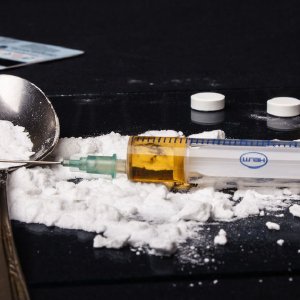Heroin Abuse Prevention Guide From Narconon Arrowhead

The United States is experiencing an unprecedented increase in heroin use, and heroin overdose deaths. Over the past fourteen years, overdose deaths due to heroin use have increased four-fold. Our nation saw the greatest increase in the past few years, just since 2010.
Heroin Facts
America is seeing a changing landscape of heroin abuse. Formerly a drug found primarily in the inner cities, the demographics are changing. Suburban youth are now at risk of heroin overdose, with the Midwest, Northeast, South and Western regions of the country all affected.
Deaths due to prescription opioid analgesic (pain relievers/painkillers) received a lion’s share of the attention in recent years. At the same time, heroin abuse and overdose deaths steadily increased, but apparently were overshadowed by prescription pill abuse and its consequences. Yet there is a connection between the two.
According to study results recently released by the Centers for Disease Control (CDC), death rates from heroin overdose in the United States doubled from 2010 through 2012. The CDC information was collected from 28 states across the nation.
Nationwide demographics and trends evidenced in the CDC study revealed that deaths due to heroin-involved drug poisoning (heroin overdose) nearly quadrupled from 2000 through 2013. The study results also revealed that men are at higher risk than women.
The changing demographics and trends of U.S. heroin use and heroin-involved overdose deaths were highlighted by the CDC study. A decade ago, heroin-involved overdose deaths were primarily evidenced in a non-Hispanic black population. In contrast, the 2013 statistics evidenced a non-Hispanic white population aged 18 to 44 years experiencing the highest rate of heroin overdose deaths.
From 2000 through 2013, different regions of the U.S. experienced spikes in heroin-involved overdose deaths. The Midwest was most affected, with an 11-fold increase, followed by the Northeast reporting a more than 4-fold increase. The Southern region was next in ranking, with a 3-fold increase. The Western region of the nation experienced a 2-fold increase.
Heroin Abuse Prevention Guide
As more U.S. states pass laws to tighten-up on and prevent illegal prescription painkiller abuse, those abusing and addicted to these opioids often switch to heroin as a more easily obtained and cheaper alternative drug. Rising heroin abuse and overdose deaths are in this way linked to prescription drugs.
Drug prevention education goes far in preventing substance abuse and its consequences. Therefore Narconon Arrowhead, a long-term drug and alcohol rehabilitation program located in Southeastern Oklahoma, provides the following guide to preventing heroin abuse.
Important Heroin Abuse Prevention Facts
Those using prescription painkillers are accustomed to a controlled dosage dispensed in pill form. Heroin is an uncontrolled dose which puts the user at risk of accidental overdose.
Chances of heroin overdose increase with use over time, as the user increasingly impairs their body and health.
Differences in heroin purity can cause overdose. A user physically accustomed to a percentage of purity may end-up getting street heroin of higher purity. Using the same dose, but of higher purity heroin, could lead to overdose.
The majority of heroin gotten on the streets is “cut”, meaning it is not pure, and contains other substances. It can also contain other drugs. Street heroin is cut with substances such as starch, powdered mile, sugar or quinine. It can also be cut with strychnine or another poison.
Sharing needles or sharing other heroin-injection paraphernalia has its own risks of transmitting disease such as Hepatitis or HIV.
While it is best never to use heroin, it is vital to know and recognize the signs of heroin overdose. It is a life-threatening situation, and requires effective life-saving action.
The following are signs of heroin overdose:
- Pupils are pinpoint size
- Fingernails are bluish
- Skin is bluish
- Skin is clammy and cold
- Heart rate is lowered
- Blood pressure is lowered
- Muscles are loose
- Respiratory distress is severe
- Coma
- Seizures
- Death
Call 911 in the event of heroin overdose.
Learning the life-saving actions to take in the event of a heroin overdose are best done before one is faced with the life-threatening situation. Learn what to do beforehand so you can take the necessary life-saving actions until paramedics or other medical personnel arrive on the scene to help.


